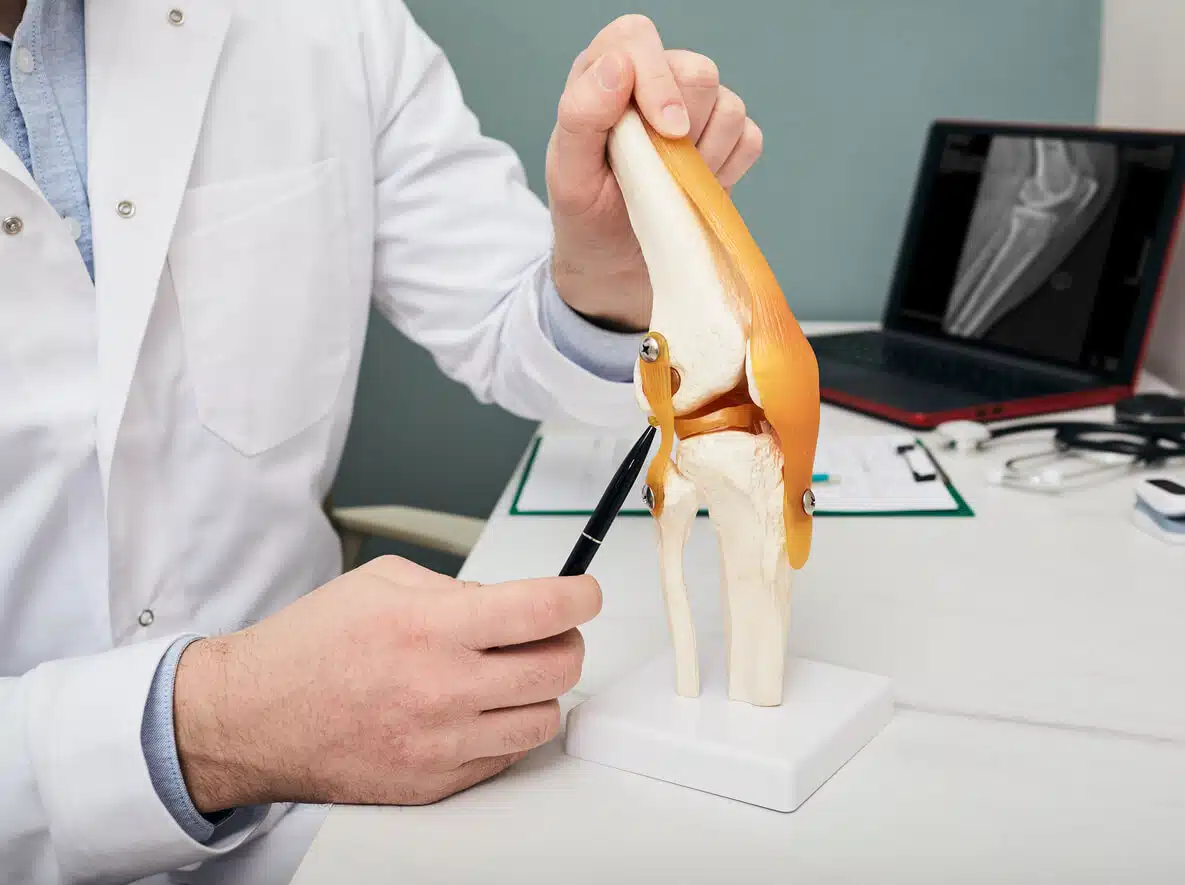
If you have recently torn your ACL, you might be feeling a mix of emotions. Fear, confusion, and frustration are all normal reactions.
But don’t worry, you are not alone on this journey. Many athletes and active individuals face ACL injuries every year. The key is to learn about your options, so you can choose the best treatment for you.
In this blog, we will discuss the two main types of ACL tear treatment options—ACL repair surgery and ACL replacement surgery. We will help you understand what each option involves, the benefits and drawbacks, and how to decide which one is right for you.
What is an ACL and Why Does it Matter?
Your ACL, or anterior cruciate ligament, is a crucial ligament in your knee. It connects the thigh bone to the shin bone and helps stabilize your knee joint.
Without a healthy ACL, simple activities like walking, running, and jumping can become difficult or even impossible.
Causes of ACL Tears
ACL tears often happen during sports activities that involve quick changes in direction, jumping, or sudden stops. For example, basketball, soccer, and football players are particularly vulnerable to ACL injuries. Accidentally twisting your knee can also lead to an ACL tear.
Signs and Symptoms of an ACL Tear
How do you know if you have torn your ACL? Common symptoms include:
- A loud popping sound when the injury happens.
- Severe pain and inability to continue activity.
- Rapid swelling in the knee.
- Loss of range of motion.
- A feeling of instability or “giving way” in the knee.
Diagnosis of ACL Tears
If you suspect an ACL tear, it is essential to see a doctor right away. They will perform a physical exam and may use imaging tests like an MRI to confirm the diagnosis.
Early diagnosis is crucial for planning the best ACL tear treatment.
What is ACL Repair Surgery?
ACL surgery begins with making small incisions around the knee to access the torn ligament. Using arthroscopic tools, the surgeon cleans the area around the tear to prepare it for repair.
Once the site is ready, the surgeon stitches the torn edges of the ligament back together using specialized sutures or anchors, ensuring the alignment and tension are correct for natural healing.
This procedure preserves the original ligament tissue, which can help restore normal knee function more quickly. After stitching, the incisions are closed, and the knee is bandaged.
Benefits of ACL Repair Surgery
- Quicker recovery time.
- Less invasive procedure.
- Lower risk of complications.
Drawbacks of ACL Repair Surgery
- Not suitable for all types of tears.
- May not provide the same level of stability as an ACL replacement.
What is ACL Replacement Surgery?
ACL replacement surgery, or ACL reconstruction, is a procedure designed to restore stability and function to a knee with a torn anterior cruciate ligament. Here’s a breakdown of the procedure:
Pre-Surgery Preparation
The patient undergoes a medical evaluation, including imaging like X-rays or MRIs. The surgeon discusses graft options: autograft (from the patient’s own body) or allograft (from a donor).
Anesthesia
General anesthesia is administered to ensure the patient is asleep and pain-free. A regional anesthesia may also be used for ACL surgery to numb the leg.
Incision and Arthroscopy
Small incisions are made around the knee for an arthroscope and instruments. The arthroscope allows the surgeon to view and assess the knee damage.
Removal of the Torn ACL
The surgeon removes the torn ACL remnants and prepares for the new graft.
Harvesting the Graft
The tendon is harvested from the chosen site for an autograft or prepared as an allograft.
Drilling Bone Tunnels
Tunnels are drilled in the femur and tibia to thread the graft through the knee.
Placing the Graft
The graft is pulled through the tunnels and positioned like the original ACL.
Securing the Graft
The graft is secured with screws or fixation devices for healing.
Closing Incisions
Incisions are closed with sutures or staples, and the knee is bandaged.
Benefits of ACL Replacement Surgery
- Suitable for most types of ACL tears.
- Provides better stability.
- Lower chance of re-injury.
Drawbacks of ACL Replacement Surgery
- Longer recovery time.
- More invasive procedure.
- Higher risk of complications.
Factors to Consider When Choosing an ACL Surgery
Several factors can influence whether ACL repair or ACL replacement is right for you. These include the severity of your tear and your activity level, age, and overall health.
Severity of ACL Tear
- Minor tears may be suitable for repair.
- Severe tears often require replacement.
Activity Level
- Athletes and highly active individuals may benefit more from replacement.
- Less active individuals might consider repair.
Age and Health
- Younger, healthier patients tend to recover better from replacement.
- Older patients or those with health issues might opt for repair.
Making Your Decision
Choosing between ACL repair and ACL replacement is a personal decision that should be made in consultation with your orthopedic surgeon. Consider all the factors, weigh the pros and cons, and choose the ACL surgery that best suits your needs and lifestyle.
ACL Surgery in Bismarck, ND
If you are facing an ACL injury and are unsure about your treatment options, we encourage you to reach out to our expert team at The Bone & Joint Center. Our highly trained and skilled orthopedic specialists are dedicated to providing you with personalized and comprehensive care tailored to your unique situation.
Whether you have questions about ACL repair or replacement or would like to explore advanced surgical techniques, we are here to support you on your journey to recovery.
To schedule a consultation and take the first step towards restoring your knee function, contact us today at (701) 946-7400 or (866) 900-8650 or use our appointment request form. We look forward to serving you!

